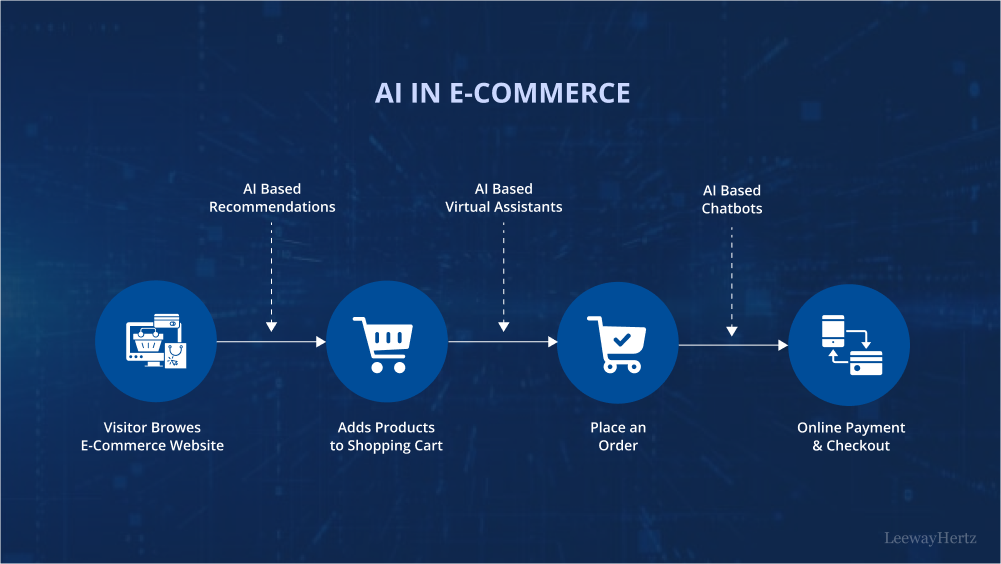Machine learning is a branch of artificial intelligence (AI) that involves using algorithms and statistical models to analyze and interpret large sets of data. In the context of e-commerce, machine learning algorithms can analyze historical data, customer behavior, purchase patterns, and other variables to uncover patterns and trends. This predictive analysis can then be used to make informed business decisions and anticipate future trends.
The Power of Predictive Analytics in E-Commerce Trends Forecasting
Predictive analytics refers to the use of historical and real-time data, along with statistical techniques and algorithms, to forecast future events and trends. In e-commerce, predictive analytics can help businesses gain insights into customer preferences, demand forecasts, and market trends. By accurately predicting these trends, businesses can optimize inventory management, personalize customer experiences, and identify revenue-generating opportunities.
Benefits of Implementing Machine Learning and Predictive Analytics in E-Commerce
Implementing machine learning and predictive analytics in e-commerce offers several advantages:

Image courtesy of medium.com via Google Images
Improved demand forecasting and inventory management
By analyzing historical transaction data and customer behavior patterns, machine learning algorithms can forecast demand more accurately. This helps businesses optimize inventory levels, reducing the risk of stockouts or excess inventory. Consequently, businesses can save costs and improve overall operational efficiency.
Personalized customer experiences and recommendations
Machine learning algorithms can analyze a customer’s browsing history, purchase behavior, and preferences to deliver personalized product recommendations. By offering tailored suggestions and personalized experiences, businesses can enhance customer satisfaction and increase sales conversion rates.
Effective pricing strategies and revenue optimization
Using predictive analytics, businesses can analyze competitor pricing, customer purchasing patterns, and market trends to determine optimal pricing strategies. By setting the right prices for their products or services, businesses can maximize revenue and maintain a competitive edge in the market.
Real-world Applications of Machine Learning and Predictive Analytics in E-Commerce
Amazon, one of the largest e-commerce giants, heavily relies on machine learning to provide personalized product recommendations to its customers. By leveraging algorithms that analyze browsing and purchase history, Amazon can suggest products that align with the user’s preferences and interests. This targeted approach has significantly contributed to Amazon’s success and customer satisfaction.
Case study 2: Walmart’s use of predictive analytics to optimize inventory levels
Another prominent example is Walmart, which utilizes predictive analytics to optimize inventory levels across its vast network of stores. By analyzing sales patterns, external factors like weather, and promotional activities, Walmart can accurately anticipate demand fluctuations and ensure optimal stock levels. This approach allows Walmart to minimize stockouts, reduce costs, and enhance customer experiences.
Case study 3: Alibaba’s implementation of machine learning for targeted marketing campaigns
Alibaba, a leading Chinese e-commerce platform, leverages machine learning algorithms to power targeted marketing campaigns. By analyzing user behaviors, preferences, and browsing history, Alibaba creates personalized advertising campaigns to reach the right customers at the right time. This approach has proven to be highly effective in increasing customer engagement and driving conversions.
Challenges and Limitations of Machine Learning and Predictive Analytics in E-Commerce
One of the main challenges of implementing machine learning and predictive analytics in e-commerce is the availability and quality of data. A large volume of high-quality data is required for accurate predictive analysis. Businesses may face difficulties in collecting and cleaning data, and incomplete or biased data can lead to inaccurate predictions.
Image courtesy of www.linkedin.com via Google Images
Privacy concerns and ethical considerations
As machine learning algorithms rely on user data, privacy concerns and ethical considerations arise. Businesses need to ensure that customer data is secured and used responsibly. Transparency and obtaining proper consent from customers are essential for maintaining trust and complying with data protection regulations.
Algorithm biases and interpretability
Machine learning algorithms are prone to biases that can impact decision-making processes. Biases can be introduced due to inherent biases in the training data or algorithm configurations. Additionally, the interpretability of complex machine learning models may be a challenge, making it difficult to understand how certain predictions are made.
Future Directions: Emerging Trends in Machine Learning and Predictive Analytics for E-Commerce
Deep learning algorithms, a subset of machine learning that utilizes artificial neural networks, have gained significant attention in recent years. These algorithms can process and analyze vast amounts of unstructured data, such as images and text, enabling more accurate predictions and recommendations in e-commerce.
Integration of AI and automation
The integration of artificial intelligence (AI) and automation with predictive analytics is another emerging trend in e-commerce. By leveraging AI-powered chatbots, virtual assistants, and automated processes, businesses can streamline customer interactions, provide real-time support, and extract valuable insights from customer interactions to drive predictive analytics.
In Conclusion
Machine learning and predictive analytics have become powerful tools in shaping e-commerce trends. By harnessing the potential of these technologies, businesses can gain a competitive edge, streamline operations, and provide personalized customer experiences. However, challenges such as data quality, privacy concerns, and algorithm biases need to be carefully addressed. Looking ahead, the integration of deep learning algorithms and the fusion of AI and automation with predictive analytics hold significant promise for the future of e-commerce. It is imperative for businesses to embrace these advancements and stay ahead of the curve to thrive in the rapidly evolving e-commerce landscape.




